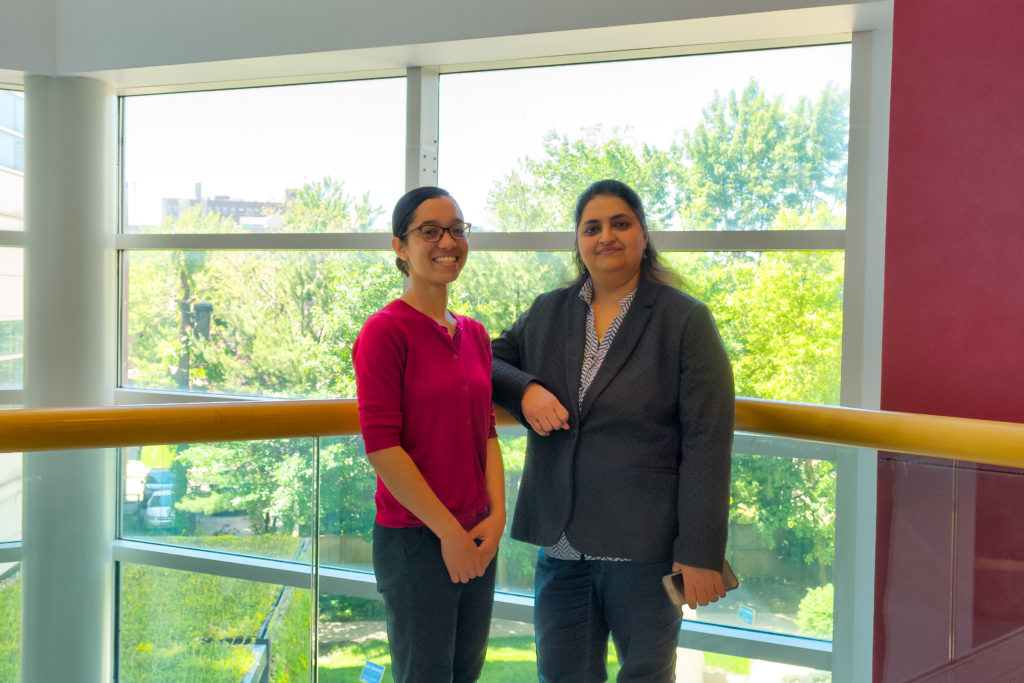Researchers from Case Western Reserve University School of Medicine have developed a new combination treatment regimen that enhances the immune system’s ability to kill leukemias that do not respond to standard treatments. The regimen includes a therapeutic antibody designed to draw natural killer immune cells to cancer cells. The antibody attached specifically to acute lymphoblastic cancer cells as early as 30 minutes after treatment, and remained attached for two days, serving as a flag to attract natural killer immune cells. The researchers were able to maximize the antibody’s efficacy by adding a second, anti-tumor molecule to the regimen.
Results published in Cancer Immunology Research describe how the antibody attaches to a specific protein on the surface of acute lymphoblastic leukemia cells (B-cell Activating Factor, or BAFF-R). Once the antibody attaches to a cancer cell, natural killer cells also attach to the antibody and this antibody acts like a bridge connecting cancer cells to natural killer cells, where it quickly gets to work destroying the cancer cell. The antibody connects with natural killer cells through a second protein commonly found on their surfaces (CD16).
The researchers, Reshmi Parameswaran, PhD, assistant professor in the Department of Medicine and MD/PhD student in her lab and the Department of Pathology, Yorleny Vicioso, created a new acute lymphoblastic leukemia mouse model for the study. They used mouse models with growing, drug-resistant cancer cells collected from human patients. Then, they tested treatments over the course of disease progression—starting with the antibody alone.
“If we started to treat mice with the antibody early during disease development, leukemia was almost eradicated by this treatment method; however, if treatment was administered late when the tumor had grown and established its own microenvironment, the antibody alone was less effective,” said Parameswaran, who is also a member of the Case Comprehensive Cancer Center and a St. Baldrick’s Scholar.
As cancer cells grow, they secrete molecules that disrupt and confuse the body’s natural immune responses. The area around an established tumor—its surrounding “microenvironment”—can contain myriad molecules that inhibit immune cells. Parameswaran’s team found unusually high levels of an inhibitory molecule called TGF-beta in the bloodstreams of the mice. Closer inspection revealed that the cancer cells were secreting TGF-beta directly, which accumulated over time in their microenvironments as a defense against natural killer cells. TGF-beta in the microenvironment inhibit the ability of natural killer cells to kill cancer cells by more than half.
“There was a clear negative effect of the tumor microenvironment on natural killer cell killing capacity,” Parameswaran said. “So, we added a TGF-beta receptor inhibitor to our antibody treatment regimen.”
Using their mouse disease model, the researchers showed that the combination of these two treatments enhanced killing of acute lymphoblastic leukemia cells—even if the disease was advanced. Antibody and TGF-beta receptor inhibitor treatment increased natural killer cell activity against cancer cells by up to 35 percent. The researchers confirmed the combination’s efficacy in mice injected with acute lymphoblastic leukemia cells from four different patients.
The combination treatment could represent a promising new regimen for late-stage acute lymphoblastic leukemia, particularly benefitting adults who are unresponsive to existing options. Data from the new study suggest the antibody, which that attaches to BAFF-R on cancer cells, could be more effective in older patients.
“We looked at BAFF-R expression in a small group of 16 patients and all of them expressed this receptor. It’s promising as a therapeutic avenue for late-stage disease” Parameswaran said. Data from larger patient sets will help us draw a definitive conclusion.”
The custom BAFF-R antibody is currently being tested as a therapy to treat autoimmune diseases and rheumatoid arthritis in two clinical trials. The TGF-beta inhibitor was recently tested in a first-in-human clinical trial for treatment for advanced-stage solid tumors. The new mouse model study provides critical preclinical data to support combining the two treatment in human trials, Parameswaran said.
###
Research for this study was conducted in collaboration with The Angie Fowler Adolescent & Young Adults Cancer Institute at University Hospitals Rainbow Babies & Children’s Hospital; The Case Comprehensive Cancer Center; and Novartis Pharmaceuticals. The study was supported by the NIH 1R21CA201775-01A1 (RP); The St. Baldrick’s Foundation (RP); The Andrew McDonough B+ Foundation (RP); and The Jane & Lee Seidman Chair in Pediatric Cancer Innovation (JL).
Vicioso, Y., et al. “Combination therapy for treating advanced drug-resistant acute lymphoblastic leukemia.” Cancer Immunology Research. DOI: 10.1158/2326-6066.CIR-19-0058.
To learn more about Case Western Reserve University School of Medicine, visit case.edu/medicine.


